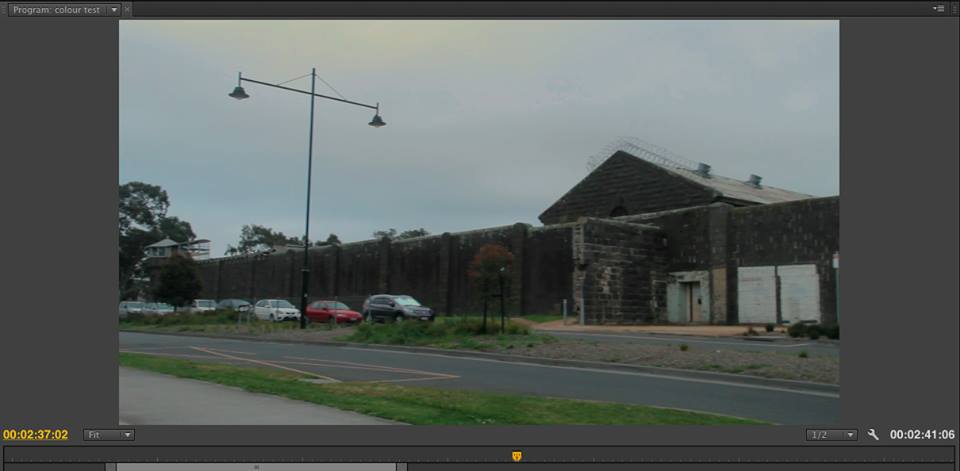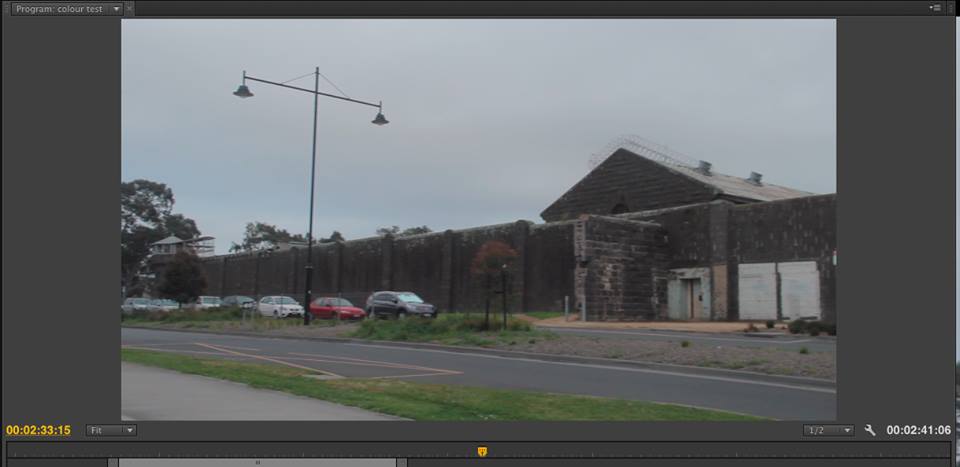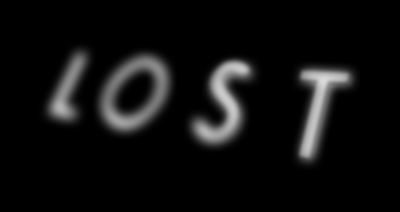I undertook my mandatory internship at Dreampool Productions in late 2014 – a small, private TV and video production company operating out of a building at 22 Wellington Street, St. Kilda. Dreampool productions was established as ‘the merged vision’ of Bob Grieve and Michael Dickinson, two of Australia’s most renowned and experienced television producers, specialising in producing content for major Australian TV networks. Dreampool has a long history producing content for ‘Crimestoppers’, ‘Huey’s Cooking Adventures’, the ‘Feast’ series and to this day, Paul Worsteling’s ‘iFish’ lifestyle program. Dreampool is made up of a dedicated team of producers, full time editors and business operations managers too.
I actually completed my year 10 high school work experience and several other weeks between 2011 and 2014 at Dreampool, always learning new things and having a great experience, so I saw fit to undertake my official uni internship there too. Previously, I had mainly been asked to cut together some videos using AVID editing software, but these videos were never for clients or actually being broadcast, etc. they were solely for my own learning. I also sat in on a bunch of edits and sound mixing sessions, getting an idea of the processes that Dreampool undertook on a daily basis. Up to this point, my time had mostly been spent as a true ‘work experience kid’ – getting a feel for the place and the work, as opposed to doing things that needed to be done. However, returning to Dreampool this time for my internship, I was asked to undertake a number of tasks that were for Dreampool and clients, as much as for me. Tasks that I completed were things like:
- Shot-listing raw footage from iFish shoots
- Ingesting shot-listed footage into the AVID servers
- Archiving AVHD Tapes from iFish shoots into Dreampool’s physical library room
- Finding old footage from previous shoots to be used in promo videos for clients (Nissan/Tackleworld)
- Cutting together birthday messages from Paul Worsteling for Bindi and Bob Irwin for Australia Zoo
- Laying out a compile of footage from the Tasmania Trout Fishing and Dhipirri, WA Barramundi fishing shoots
- Rough cut for Tasmania/Dhipirri episodes
- Completing music cue-sheets for iFish and the APRA, as well as their ‘International airing’ versions, without advertising and competition material
- Updating season-long run-sheets for iFish as each episode was completed
- Making copies of episodes as they aired and posting to sponsors/guests on iFish
- Cutting together contractual YouTube promo videos from Paul Worsteling (iFish Host) to some of iFish’s sponsors – including Tackleworld and Club Marine.
My work experience at Dreampool has been greatly successful in meeting the goals that I established when I first lodged my work experience. Over my multitude of time spent in-house, I’ve learned more than I could’ve hoped to in a classroom – by contributing to the actual running of the business, my time at Dreampool has been nothing short of the most involving and educational media experience I’ve had to date. What I wanted most of all from Dreampool was to gain an understanding of what it really means to be involved in TV production – whether it was from the perspective of a full-time editor or a producer – I definitely have a lot more sight and understanding from these positions now, as I was required to complete work from a variety of roles relating to iFish. Not only did I feel welcomed during my time at Dreampool, but I felt appreciated, as I could see the work that I was doing, directly helping the cause.
My time at Dreampool also gave me a great sense of responsibility, as I was often asked to complete a number of tasks and left to my own work for the entire day, unsupervised and wholly responsible for the work I was completing, which I took in stride, as a challenge. Very occasionally I had to ask for help or advice, but was mostly independent during the day, which definitely helped me to initiate some problem solving skills and really figure things out for myself – something that I feel is a quintessential part of operating in a real work place – especially one like the media industry, where you mostly have to learn the specifics on the job.
The continuation of this sense of responsibility was also achieved when Bob gave me the code to the alarm system, my own key to get in and out of the building and also let me stay after hours on my own if I had more work to complete – if I so desired, which I often did, locking up and arming the alarm as I left. Even though these aren’t necessarily aspects of work that one might associate with a media internship, they went a long was to making me feel like part of the team and that I was trusted – a trust that I’m still thankful for, it made me want to work harder for Bob and Dreampool, whilst giving invaluable real-world experience in a work place, with responsibility.
I guess the only aspect of the time I spent at Dreampool that didn’t exactly meet my expectations was the duration of my stay – it has exceeded my expectations… Since I completed my pro-bono 80 hours in late 2014, Bob, Noni and the rest of the team at Dreampool have invited me back, to work for them when they need a helping hand in busy periods and to get through some of the more time-consuming jobs around the place. More recently, I’ve been working an average of about 10 hours a week there, and am officially on the company books, getting paid to do increasingly more important and helpful tasks for Dreampool. So glad, I am, that I’ve been able to secure some proper work in my target industry, get paid for it and also be contributing to a company that is exceptionally pleasing to work for, with what I feel are real prospects for me in the future.
Dreampool provided me a with a great example of effective communication within a team environment. Through the phone system in the building, emails and simply dropping past one another’s workspaces, Noni and I in particular, were able to develop quite a productive little system whereby we were able to get a lot done.
Nothing other than actual industry experience can prepare you for joining the workforce at the end of your degree. I feel that what we learn at uni is knowledge without an application or use, but after my time at Dreampool, I found that a lot of what we learn at uni merely gives us the mentality and skills needed to learn how to function in a professional environment – that it’s up to the individual to take control of their work and learn how to most effectively contribute in their organisation.
Another aspect of my time at Dreampool that I’m very grateful for is the fact that I’ve received quite a well-rounded knowledge of the operations. From editing short 3min promo clips for clients, to making and posting DVD copies to clients and finally filling and cross checking music copyright paperwork associated with content that is broadcast within Australia, Dreampool has been a wonderful opportunity for me to gain invaluable experience as not only an editor, but some of the less-creative and more structured roles within television production in Australia.
Although I was only at Dreampool 2 or 3 days a week over my 7 week break from Uni, I feel that it helped me develop my professional skills, knowledge, networking and overall workability tenfold as I now have a more practical understanding of the industry and how it functions on a day to day basis, as well as what it’s like to have responsibilities in a professional setting and how to report to superiors etc. Since my official internship ‘finished’ and I’ve begun actual work for Dreampool, I’ve only learned more. Ultimately, this has been one of the richest experiences for me as a media student and I cannot be thankful enough for the opportunity, but also where it has led me.
Since writing this report in early 2015, my work at Dreampool has continued and I’ve become an even more involved member of the Dreampool team. I now have my own permanent workspace set up in the building and have been entrusted with some more duties including buying supplies for the every day functioning of Dreampool, consolidating and transcoding footage in preparation for Dan (full-time) editor to come in and edit iFish episodes, as well as operating on a much more independent level. I’m now sent emails by Noni when there’s work to be done and I make time within my own schedule to come in and complete the work, rather than being told when to come in.
Dreampool is now my primary source of income and I can sometimes work 35-40 hours a week when there’s lots to be done. Informal talks between myself, Noni and Bob have revealed that there will most likely be a position for me at Dreampool when I graduate – a truly exciting prospect for me.
As I’m going on a working holiday for <7months once uni is over, I’ve actually taken the initiative to get someone to help cover my work whilst I’m away, much to the satisfaction of Noni – and will resume my work for them when I return, mid-2016.









